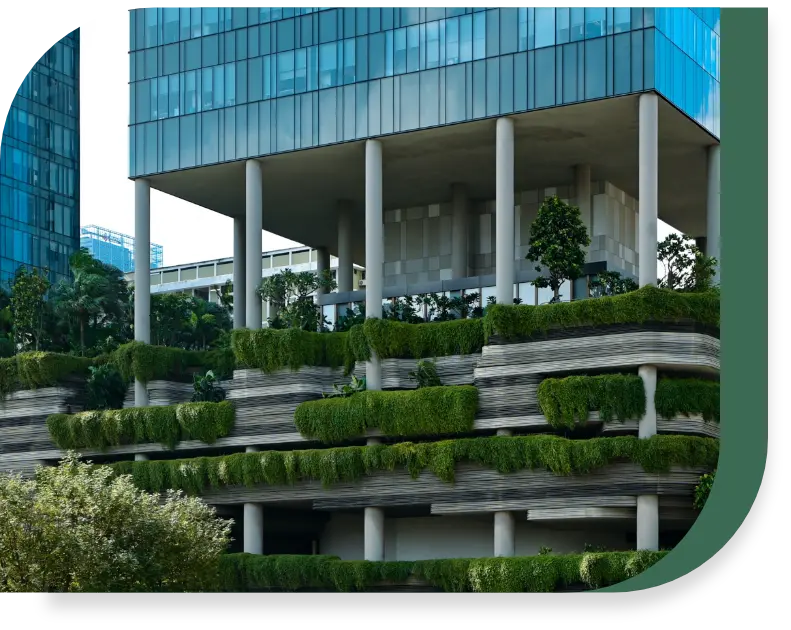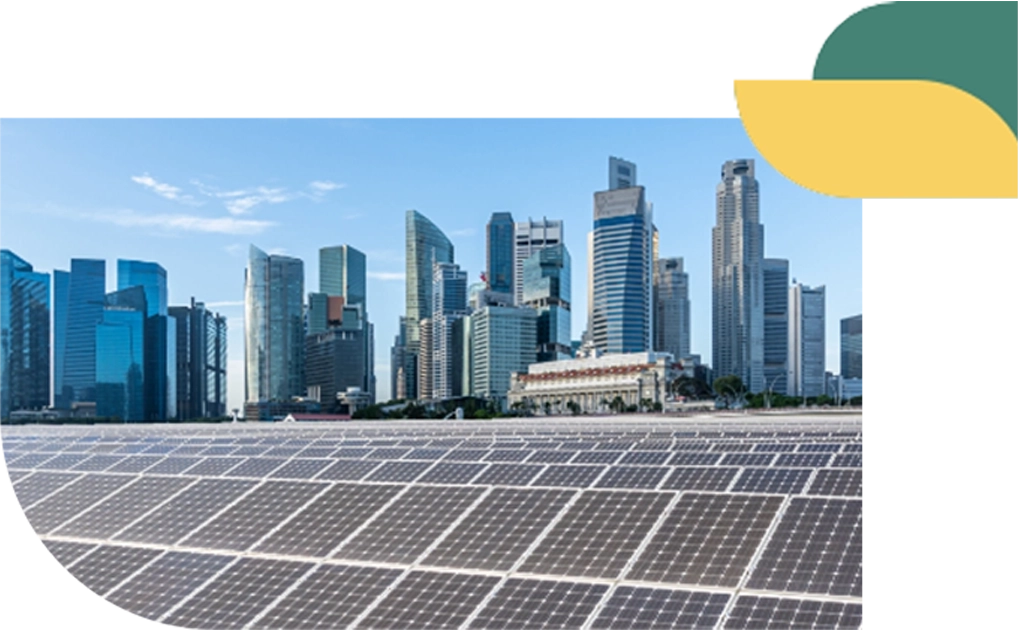Building Singapore’s sustainable skyline
When Singapore gained its independence in 1965, no one could have predicted that this tiny nation of just 750 square kilometres would emerge as a hub of Sea East Asia’s modernisation journey. But as our skyline gradually filled with skyscrapers, global warming also came to the forefront as a critical concern.

Singapore’s founding father and former Prime Minister, Lee Kuan Yew, famously applied the term “a garden city”1, referring to the use of greenery to improve the quality of life in Singapore’s highly-industrialised environment. Since then, many tree-planting and landscaping projects have been embarked on. When land became more scarce and the building of high-rises became more prolific, planting in and on buildings became a solution.
One of Singapore’s first initiatives to encourage green growth on its buildings began with the Skyrise Greenery Incentive Scheme (SGIS) in 20092. Under this scheme, property owners could receive funding of up to 50% of the cost of installing green rooftops and facades2.
This not only helps reduce the building’s carbon footprint, but property owners also get to save on air conditioning and other energy costs. Today, the scheme’s objectives contribute to Singapore’s City in Nature vision, which is a key pillar of the Singapore Green Plan 2030, launched in 2021 to help strengthen Singapore’s commitment to our 2050 net-zero goal.
In recent years, planting greenery on buildings is no longer an after-thought, but has become an integral part of building design. The term ‘biophilic’ is an increasingly popular term that describes such design, and CapitaSpring is one of the newest examples of a biophilic skyscraper1. It was built to house over 80,000 trees and plants, even exceeding the legal minimum by about 40%1. Not far from this building is the Parkroyal Collection Pickering hotel, another biophilic building, that features over 160,000 square feet of greenery1. And slightly more than a kilometer away is the once-red exterior of the Oasia Hotel, slowly turning green as more than 20 species of creepers and vines colonise its facade1.
Greening buildings however, isn’t just about planting trees on them. As sunshine has long been one of the most viable renewable energy options for Singapore6, using the surface of buildings to generate solar energy has become a key strategy in turning buildings green. Rooftops can easily be utilised to install solar panels. But going a step further is the use of Building Integrated Photovoltaics (BIPV) technology. This means that photovoltaic materials are used instead of conventional materials to build areas such as the roofs, skylights or facades. They are incorporated into the design and construction of the building.
In Singapore, one of the more prominent BIPV projects include the Singapore Sports Hub, with its large dome and over 2,700 solar panels built around it7. Not only do these panels generate clean electricity, but they also provide shading for the office and car park from direct sunlight7. Another example is the Marina Bay City Gallery with its solar panels being built on the roof as a skylight.
SP Group has also invested in BIPV technology and completed its first project in Guangdong China in 2022 for Guangdong Lingxiao Pump Industry Co Ltd, a global leader in water pumping solutions.
Spanning an area of 17,000m2, the project comprises a high tech, integrated 4MWp distributed solar photovoltaic (PV) carport system that enables optimisation of the rooftop space to generate energy and provide a sheltered carpark for up to 400 cars. The project is expected to generate a total of 110 million kWh of clean power over 25 years, or an average of 4.36 million kWh annually. The project is also expected to help the plant avoid total carbon emissions by nearly 4,500 tons each year.
Focusing on greening rooftops still isn’t enough. Buildings account for over 20% of Singapore’s emissions, which include overall energy usage and management within the building4. As part of the Singapore Green Building Masterplan, optimising energy consumption to meet the Building and Construction Authority’s (BCA) criteria for Green Mark certification is outlined as a key goal4.
This is where smart building management systems such as SP’s GET® suite of solutions can help, with the use of Artificial Intelligence(AI), the Internet of Things (IoT) and smart sensors to collect data and provide smart insights to ultimately optimise air-conditioning and energy efficiency and improve indoor airflow control. GET® Insights monitors, reports and analyses utility usage, so that wastage and cost efficiencies can be identified.

While GET® Control is a smart micro-climate control system that can be installed with any existing building management system, specifically to manage air-conditioning. As air-conditioning alone constitutes 19% of carbon emissions in Singapore5, being able to reduce its energy consumption from automatic and predictive systems control can significantly reduce carbon footprint in buildings.

As we move ahead, the mark of progress will be increasingly measured by how seamlessly green efforts are integrated into our built environment, whether it is lush environments, energy efficiencies or renewable energy solutions.
Contact us to learn more about SP’s solutions for a sustainable built future.
Footnotes
1‘Biophilic’ skyscraper bursting with 80,000 plants opens in Singapore, CNN, October 2022
2Skyrise Grenery, skyrisegreenery.nparks.gov.sg
3Why so many buildings in Singapore are covered in plants, Business Insider, September 2023
4Singapore Green Building Masterplan, www.mnd.gov.sg
5Commentary: Air-conditioning – the unspoken energy guzzler in Singapore, CNA, September 2020
6Singapore Green Plan, greenplan.gov.sg
7Singapore’s Sports Hub marks new dawn for solar industry, Eco-Business, June 2014

